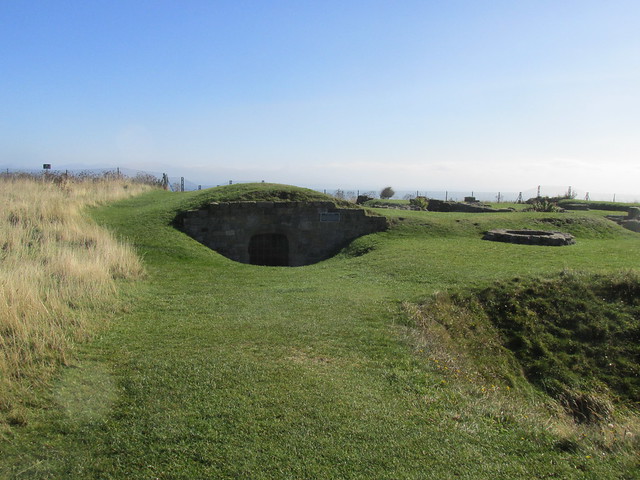The earliest evidence of settlement of the headland dates from the Bronze Age. It probably consisted of a group of small houses, forming a farmstead where livestock could be grazed. It's difficult to say for sure how far the settlement extended because a large part of the cliff has fallen away through coastal erosion over the centuries.
 |
| Signal station site |
They eventually came from the North in the form of Viking hordes who arrived in the 10th century. In fact Scarborough was founded in 966 by the Viking Skarde who gave it its original name - Skardeburg.
There was a very early Norman wooden castle on the headland, built by William Le Gros, grand-nephew of William the Conquerer but thta had disappeared by the time of Henry II who rebuilt a stone structure. Richard I ignored the place while he went off on his Crusades, but his brother King John invested a great deal of money in it so he could use Scarborough as a base while he sorted out the northern barons. Other kings, including Henry III and Edward I were also fond of the place and maintained it. Even Richard III spent time there (before losing his horse and his kingdom in Leicestershire)
During the Civil War it was held as a Royalist stronghold by Sir Hugh Cholmley (after he swapped sides), but fell, after a siege, to Parliamentarian troops. In fact the castle changed hands several times between 1642 and 1648, not always as a result of battle, and eventually became a prison run by Cromwell's forces, to house enemies of the Commonwealth.
It was a prison for quite some time and among its inmates was George Fox, founder of the Society of Friends (Quakers), who spent a year there on the orders of Charles II.
In December 1914 a German battle fleet sailed along the Yorkshire coast and staged an attack on Scarborough that killed 19 people. It also caused considerable damage to the town, including to the castle keep and the lighthouse.
In WWII it was rumoured to house a military listening post. It's an open secret that there's still something similar on the outskirts of the town.



Really interesting and seems such a fine place. Thanks for sharing!
ReplyDeleteIt is a fascinating placet, last time we visited it was a cold and misty day so we didn't have very clear views of the two bays - very atmospheric though:)
ReplyDeleteI have been to Scarborough a few times but never visited the castle.
ReplyDeleteAn interesting post especially the Viking origin of the name Scarborough. I must admit that I didn't know that Scarborough has a castle but the site obviously has a long history.
ReplyDeleteI enjoyed Scarborough Castle very much. And it's a great post. But you don't mention the ghost of Piers Gaveston..! Please let us know the origin of 'the Bolts' when you find out.
ReplyDelete